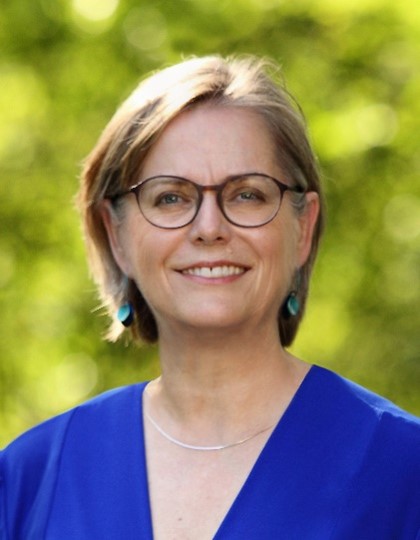The Current February 2021
The Current February 2021
In 2016, as a result of catastrophic flooding along Lake Champlain and the Richelieu River in spring 2011, the governments of Canada and the United States instructed the International Joint Commission (IJC) to “fully explore the causes, impacts, risks and solutions to flooding in the Lake Champlain-Richelieu River basin.” The IJC established a Study Board to oversee the Study and to provide recommendations. The IJC also established a Public Advisory Group to assist the Study Board with engaging the public over the course of the Study. The Public Advisory Group publishes this bimonthly newsletter to help keep the public informed about the Lake Champlain Richelieu River (LCRR) flooding Study.
Letter from the Public Advisory Group Co-Chairs
Since the onset of this study, we believe that good quality credible scientific data combined with public and stakeholder participation can foster a shared understanding of the relationship between basin communities and their environment in the context of flooding and leads us to viable flooding solutions.
Over the last three months, study scientists have shared the preliminary findings of their research through technical webinars. Some of you probably participated in surveys, focus groups, meetings or workshops that were key to their work and we thank you for your contribution to the study.
Study experts are still hard at work exploring potential solutions to reduce vulnerability and increase resiliency in communities to floods. 2021 will be a busy year.
As always, thank you for your interest in the Study.
Madeleine Papineau, Canadian Co-Chair Kristine Stepenuck, US Co-Chair
Study News
Potential Structural Solutions Report
The Study Board is preparing to release its Potential Structural Solutions to Mitigate Flooding in the Lake Champlain-Richelieu River Basin report in coming weeks. It will be posted on the study board website at ijc.org/lcrr/library. The report is one of several to be released by the Study Board in 2021.
This report focuses on the aspect of the Study Board’s mandate to investigate potential moderate structural works to address flooding in the LCRR basin. Study experts identified several potential structural options and evaluated them based on several criteria.
Structural alternatives that were identified by the Study Board as the most promising options were excavating man-made structures on the Saint-Jean-sur-Richelieu shoal, and diverting moderate to high flows through the Chambly Canal. Study experts have done an initial analysis of these alternatives, and further investigation of the cost estimates and hydraulic simulations and evaluations are still being carried out.
Technical Webinar Series Wrap-up
The Study Board would like to thank all the participants that joined the Study’s technical webinar series. Over the 8 weeks of webinars, study experts provided an in-depth look into the various efforts being made by the board to find solutions to impacts of flooding in the LCRR basin. The webinars reached more than 250 people throughout the series and provided opportunities for the public and interested parties to ask questions directly to study experts. The series covered topics relating to:
- Watershed Storage
- Overview of Study Performance Indicators
- Improvements in Flood Forecasting
- Performance Indicator for Damages to Residential Buildings and its use in Economic Analysis
- How the LCRR study is Assessing Climate Change
- Chambly Canal Diversion
- Floodplain Management Considerations
- Risk Perception Surveys, Vulnerability and Other Social Science Studies
If you missed any of the webinars, or would like to review any of the materials again, recordings are available on the Study’s website at: www.ijc.org/lcrr/videos. The presentation slides are also available at https://ijc.org/en/lcrr/library/reports. You can also reach out to any of the presenters through the contact information provided in each of the presentations.
Expert Advisor Highlight
Continuing our series highlighting subject matter experts who are working closely with the Study Board, we spoke with Ted Yuzyk, the Canadian co-lead of the Flood Management and Mitigation Measures (FMMM) Technical Working Group.
Ted has more than four decades of experience in water resources management, and has been part of the LCRR flood study since its inception five years ago. FMMM works to identify structural and non-structural mitigation measures that could reduce the impacts of flooding in the Lake Champlain – Richelieu River basin.

In 2014, he retired from the International Joint Commission as Director of Engineering and Science, and works on the LCRR study from a home office in Ottawa. Ted’s experience in water issues includes 27 years working for Environment Canada, including serving as the National Director for Water Survey of Canada and representing the country abroad as the National Hydrological Advisor. Ted also served as Canadian Chair of the IJC’s International Upper Great Lakes Study.
He co-authored a chapter titled “The International Joint Commission: Continuing Evolving Approaches to Conflict Resolution” for the 2020 book titled The First Century of the International Joint Commission.
In addition to his work on the LCRR study, Ted is a member of a Canadian water think tank, Forum for Leadership on Water, and is vice-chair of the Ottawa Valley Wild Bird Care Centre.
Performance Indicator
The LCRR flood study is considering a number of performance indicators (PI) to assess the potential impacts and benefits of different flood mitigation measures. These PIs cover environmental, economic and social categories.
One potential PI the study is looking into is the black ash tree — a critically important resource for Indigenous people such as the W8banakiak (Abenakis) and other First Nations in Quebec. Black ash (or “Maalhakws” in aln8ba8dwaw8gan) has been used by countless generations to weave baskets and remains a cultural, economic and spiritual resource symbolizing survival and cultural continuity to the First Nations people. Black ash grows in wetland forests and swampy areas, though not all trees have the superior quality required for basket weaving.
The study is consulting closely with both the W8banakiak and the Mohawks of Kahnawake to find appropriate ways to integrate this focus on black ash in the study, and how the trees respond to different levels of water in the ecosystem and to investigate the development of a PI.
People
In addition to technical experts, the study works closely with community members who volunteer their time on the Public Advisory Group, or PAG. The 12 members of the PAG include individuals from Canada and the United States throughout the watershed study area. We introduce you to two members in this issue of The Current.

Marla Emery is a research geographer with the U.S. Department of Agriculture, Forest Service, and works in partnership with Indigenous people throughout the U.S. Northeast. With her background on the use of land and water in the region by Indigenous people, Marla has supported the study’s respectful engagement of Tribes and First Nations throughout the area.

Harm Sloterdijk is a retired aquatic biologist who has worked on transboundary waters, including Missisquoi Bay and the Richelieu River. He currently serves as an ambassador of the Richelieu River Basin organisation COVABAR, or Conseil de concertation et valorisation du basin de la rivière Richelieu (Consultation and development council of the Richelieu River basin). Following the 2011 flood, Harm immersed himself in learning about flood responses in his native Netherlands, and uses that knowledge to assist the study as a member of the PAG.
On the Web
Stay updated on the Study Board’s work by signing up to receive electronic updates via our email distribution. Click on our home page (https://www.ijc.org/en/lcrr) and scroll to the bottom to join.